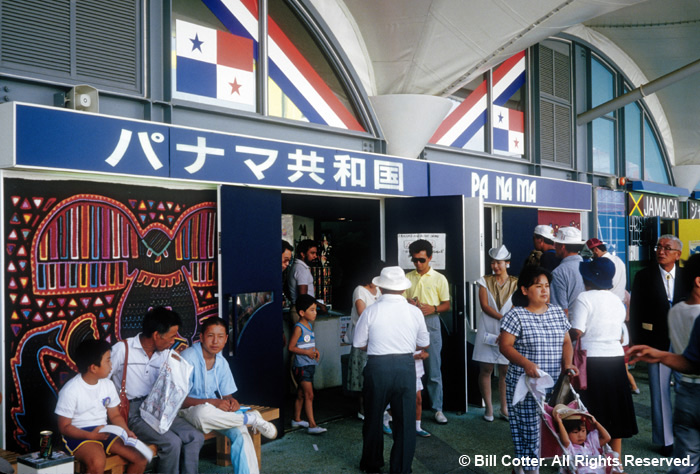Panama
“Crossroads of the World”
The Republic of Panama is located where North and South America join. Most Panamanians are either Indio or the Indio-Spanish mix, Mestizos. The national language is Spanish, but English is also used.
The word "Panama" automatically conjures up the Panama Canal, and Panama's displays at Expo '85 center around this world-famous link between the Atlantic and Pacific Oceans. The Panama canal cuts the narrow isthmus of Panama in two, joining the Caribbean Sea and the Pacific Ocean. It will revert from American to Panamanian custody in the year 2000, according to the terms of a 1977 treaty. Photographs, slide shows, and a scale model complete with ships in transit give an idea of what a great effect the Panama Canal has on the lives of people in the areas of communications and transportation.
The new Panamanian government, which took office last year, has devoted a lot of time and effort to developing a good display for Expo '85.
A MODEL OF A UNIQUE CANAL The extraordinary model of the Panama Canal shows the structure and functions of the canal, unusual in that it uses locks. The Panama Canal was technologically harder to build than the Suez Canal because of the construction involved in connecting swamps and lakes in the jungle. As a result, nearly ten years were needed to complete it. Water is temporarily dammed by the locks, and the ships are raised or lowered with the water level.
The Panama Canal is a vital link in international trade and affects the lives not just of Panamanians but of people all over the world.
The panels accompanying the model of the canal graphically convey how important a role the canal plays.

The model of the canal was the major display inside the Panama pavilion, showing model ships as they transited the vital waterway. (CD #5 Set 10 #24)
